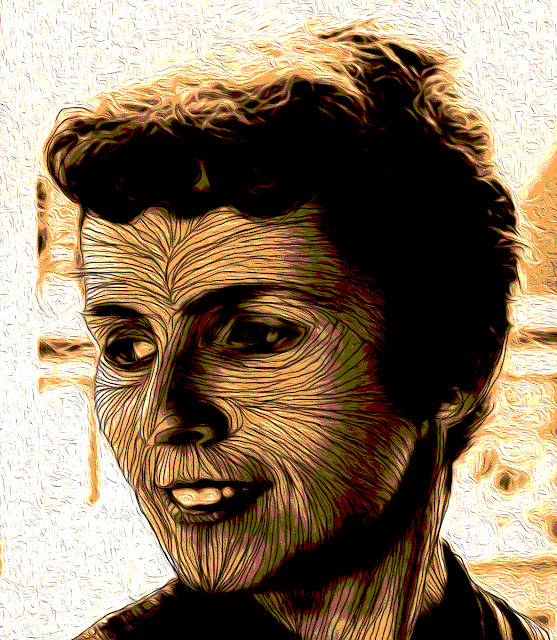 |
| Ernest Hemingway Poster by T.A. |
The Art of Fiction
No. 21
Spring 1958
The Paris Review No. 18
HEMINGWAY
You go to the races?
INTERVIEWER
Yes, occasionally.
HEMINGWAY
Then you read the Racing Form ... There you have the true art of fiction.
—Conversation in a Madrid café, May 1954
 Ernest Hemingway writes in the bedroom of his house in the Havana suburb of San Francisco de Paula. He has a special workroom prepared for him in a square tower at the southwest corner of the house, but prefers to work in his bedroom, climbing to the tower room only when “characters” drive him up there.
Ernest Hemingway writes in the bedroom of his house in the Havana suburb of San Francisco de Paula. He has a special workroom prepared for him in a square tower at the southwest corner of the house, but prefers to work in his bedroom, climbing to the tower room only when “characters” drive him up there.
The bedroom is on the ground floor and connects with the main room of the house. The door between the two is kept ajar by a heavy volume listing and describing The World’s Aircraft Engines. The bedroom is large, sunny, the windows facing east and south letting in the day’s light on white walls and a yellow-tinged tile floor.
The room is divided into two alcoves by a pair of chest-high bookcases that stand out into the room at right angles from opposite walls. A large and low double bed dominates one section, oversized slippers and loafers neatly arranged at the foot, the two bedside tables at the head piled seven-high with books. In the other alcove stands a massive flat-top desk with a chair at either side, its surface an ordered clutter of papers and mementos. Beyond it, at the far end of the room, is an armoire with a leopard skin draped across the top. The other walls are lined with white-painted bookcases from which books overflow to the floor, and are piled on top among old newspapers, bullfight journals, and stacks of letters bound together by rubber bands.
It is on the top of one of these cluttered bookcases—the one against the wall by the east window and three feet or so from his bed—that Hemingway has his “work desk”—a square foot of cramped area hemmed in by books on one side and on the other by a newspaper-covered heap of papers, manuscripts, and pamphlets. There is just enough space left on top of the bookcase for a typewriter, surmounted by a wooden reading board, five or six pencils, and a chunk of copper ore to weight down papers when the wind blows in from the east window.



























%2B(1).jpg)
